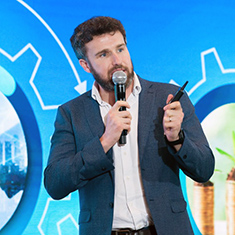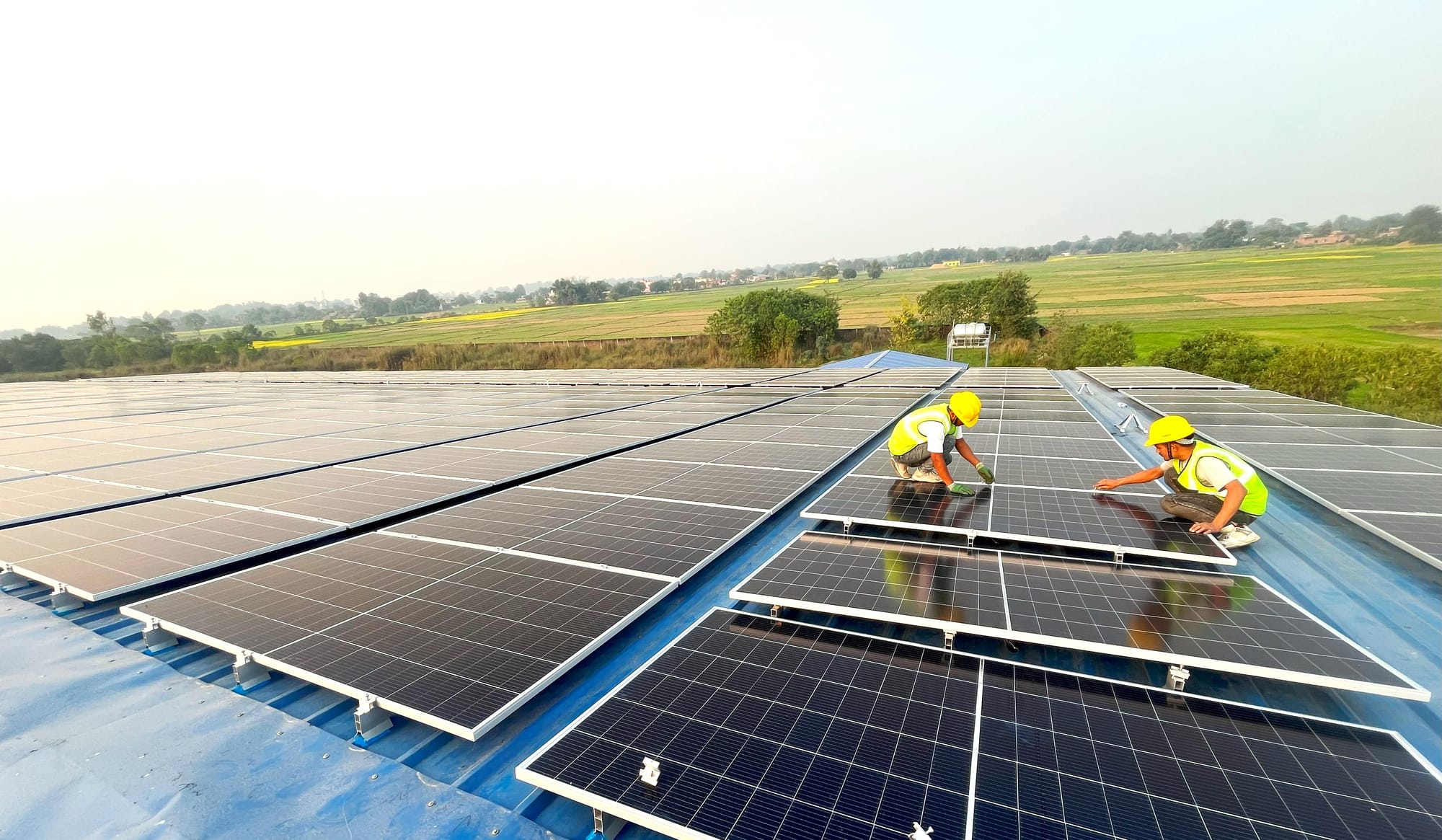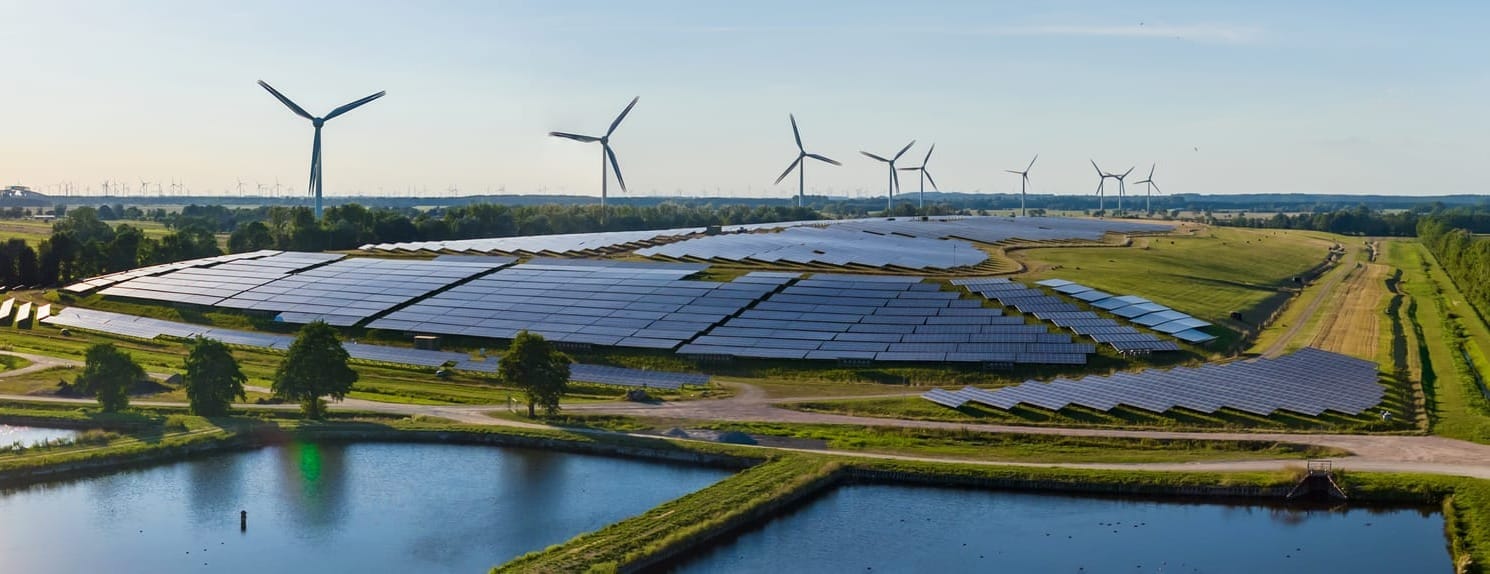This article was first published in the British Expertise International report Accelerating Climate Finance: a view from UK-based specialist providers, released in November 2023. It is reproduced here with minor edits to accord with house style.
Introduction
DAI is a global development company that has been working at the forefront of international development for more than 50 years. A key component of its mission is to help mobilize private investment into low- and middle-income countries to bridge the financing gap to achieve the SDGs by 2030 and the climate targets under the Paris Agreement by 2050. At the core of this work is the structuring of innovative and blended finance instruments that, through public capital, de-risk investments and can catalyze more commercial investment into frontier markets.
The Opportunity
Fostering the power of markets and private capital to achieve development goals, including those related to climate and nature development, is not a new idea, but it requires a concerted paradigm shift to achieve the impact ambitions. Significant investment is needed immediately to bridge gaps in the supply and demand for inclusive climate finance, as climate impacts multiply every minute and greenhouse gas (GHG) emissions continue to rise. Attracting adequate levels of financing for well-thought-out, well-prepared, and bankable projects is key to ensuring the realization of the desired climate and environmental transformation in low- and middle-income countries. Green bonds are increasingly being issued by governments and financial institutions to overcome these financing challenges and reach climate goals. Green bonds are debt instruments issued by public or private entities on listed exchanges to fund projects that have positive environmental and/or climate benefits while providing a return to investors, who are showing a keen appetite for green issuances.
The Intervention
DAI has taken a three-pronged approach to supporting the development and growth of green bonds in low-and middle-income countries. The approach focuses on providing both technical assistance and direct investment.
1. Green bond training
The first pillar of the approach is the provision of training and technical assistance to financial and public institutions to enhance their abilities to develop and place green bonds. For instance, in Armenia, DAI trained financial institutions, the Armenian Central Bank, and government stakeholders on how to understand green bond issuance structures, on developing green bond frameworks in alignment with requirements of selected international standards—such as ICMA and Climate Bonds taxonomies—and then on the listing procedures and processes for leading international green exchanges, such as The Luxembourg Green Exchange. Under the U.S. Agency for International Development (USAID)-funded Vietnam Urban Energy Security (VUES) program, DAI trained state-owned financial entities, financial institutions, and state actors on green and sustainable financing, green bond eligibility, green bond markets, the process of listing on leading markets, an overview of green bond issuance, impact reporting, a green bond framework, use of proceeds and project selection, how to screen projects, the external review process, and drafting a green bond prospectus.
2. Sovereign bond issuance
The second pillar is the provision of support to sovereign governments for the issuance of green bonds into the market. Under the Foreign, Commonwealth & Development Office-funded Policy Development Facility Phase II (project, DAI supported the Government of Nigeria to become the first country in Africa (and the fourth globally) to issue a sovereign green bond in 2017. DAI provided information about policies, strategic and administrative requirements for issuing the bond—including the usage of green bond frameworks—and guidance in identifying green projects. Similarly, under the USAID-funded Macro-Economic Stabilisation and Reform program, DAI supported the Egyptian government to develop a green bond framework and green bond manual, followed by support to issue a €750 million green bond in 2020.
3. Direct investment in green bonds
MicroVest, the asset management arm of DAI Capital, recently invested $10 million in Mongolia’s first ever green bond to support the country’s climate transition, alongside the International Finance Corporation (IFC) and FMO, the Dutch development finance institution. Proceeds from the $60 million bond will go toward supporting renewable energy, energy efficiency, green buildings, pollution prevention and control, water management and treatment, sustainable agriculture, and clean transportation.
“Green finance is a priority for the bank. With the steadfast support of our longstanding partners IFC, FMO, and MicroVest, Khan Bank, as the largest bank in Mongolia, is proud to issue Mongolia’s firs ever green bond" — Munkhtuya Rentsenbat, CEO, Khan Bank

The Breakthrough
Despite market challenges in 2022 after years of rapid growth, 2023 saw green bonds topping $350 billion in issuances for the first time during the first six months of the year.
The market growth is providing opportunities for low-and middle-income countries, yet the financing gap to achieve net zero targets and help developing countries meet their climate commitments remains. More needs to be done to mobilize private capital for climate purposes in these geographies.
DAI’s green bond work suggests that success can be attributed to interventions leading to either market growth or market building for green bonds. For instance, engagement in Nigeria led to market growth with the first sovereign bond certified using the Climate Bonds Standard. It raised £25 million with a strict climate and nature focus to fund solar power and afforestation projects that would be of benefit to the Nigerian economy and livelihoods as well as reduce greenhouse gas emissions. Through this initial bond offering, nine Universities in Nigeria received solar panels. A second bond raised a further £35 million to fund a wider climate and nature portfolio, and a third is now being considered.
Although not all support provided will necessarily lead to successful bond issuance, success could also be measured in the strengthening of green bond ecosystems and market building. Although the financial institutions supported in Armenia and Vietnam are yet to issue any green bonds, the training provided to a variety of public and private market actors has built the overall capacity of the ecosystem and has enhanced the market’s ability to issue green bonds in the future.
Learning
A key learning from these green bond interventions has been that to build effective green bond ecosystems in low- and middle-income countries, it is essential to combine different forms of support. In DAI’s experience, this has meant working across the company using both investment management and technical assistance expertise to build their engagement. This principle was epitomized in the Khan Bank green bond investment. DAI’s 20-year engagement with Khan Bank, through technical assistance and board involvement, helped transform the bank into a large bank able to offer financial services to underserved and remote populations across Mongolia.
The investment into the green bond is a culmination of this engagement, which has not only helped increase access to finance for vulnerable populations in Mongolia but will now also help the country deliver on its climate ambitions while paving the way for more banks and corporations to tap into green finance.

.jpg)






